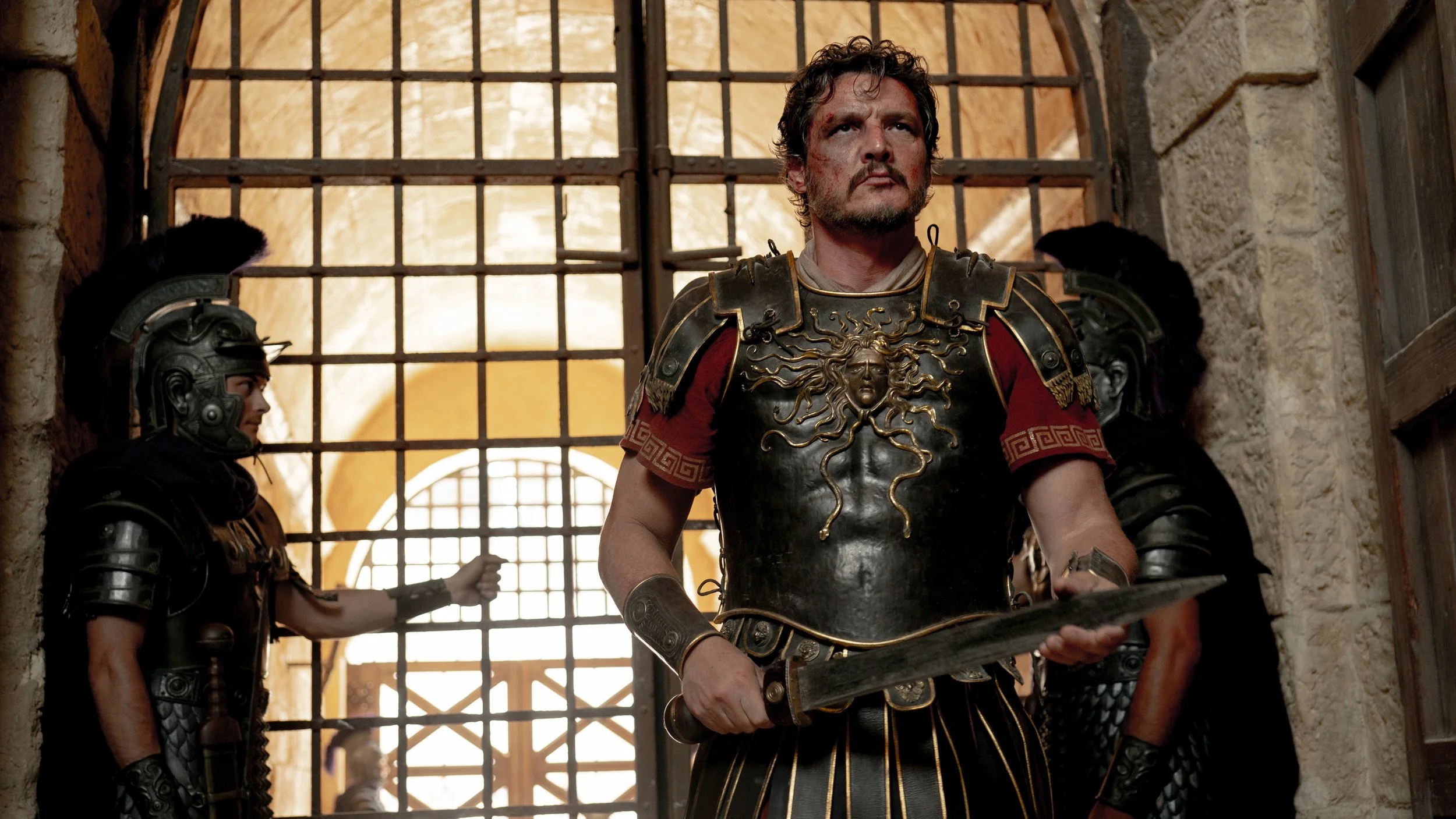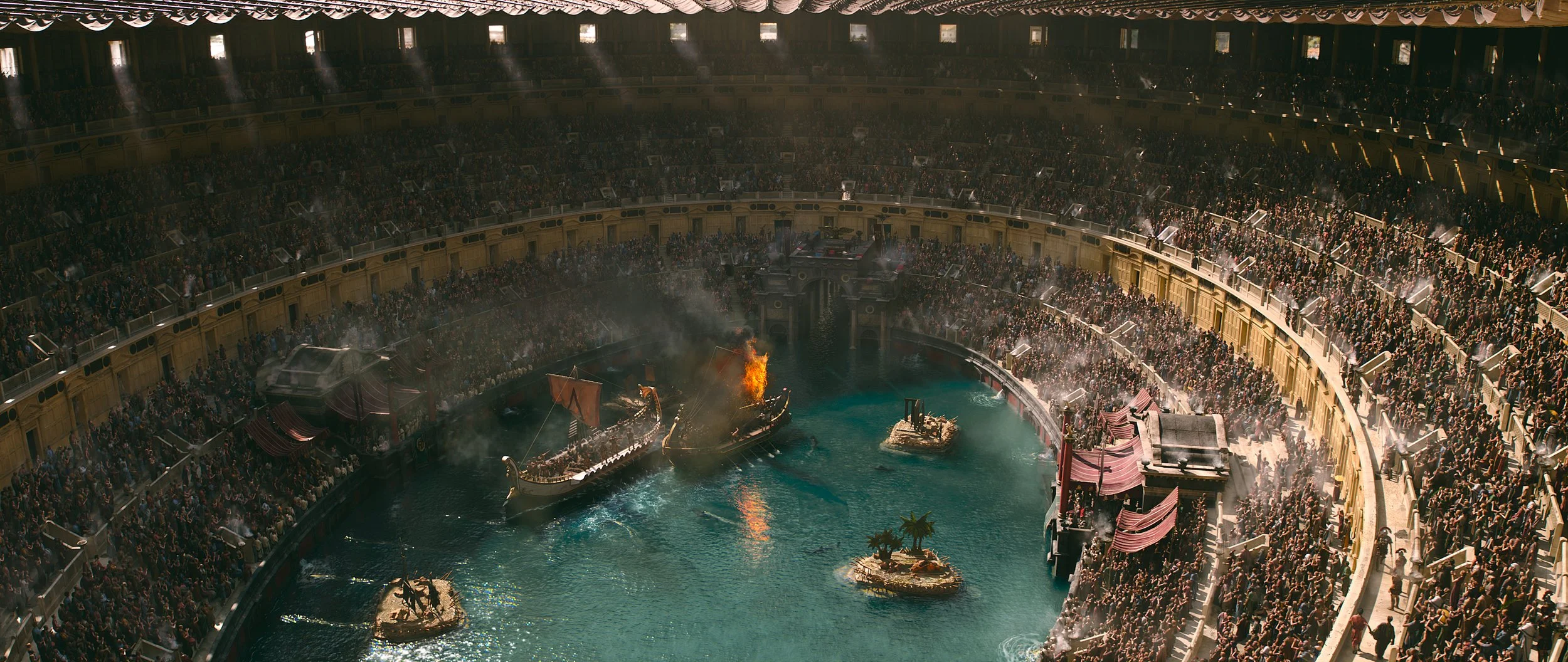"Gladiator II" Review: Standing In The Shadow of Its Predecessor
Twenty four years ago, the world of cinema was in a different place. Upon Gladiator’s 2000 release, CGI (computer generated imagery) was burgeoning. The film boasted of scenes of a coliseum built by a computer’s hand. A lot has changed since then. What once was done by trained professionals can be done by anyone with an app on their cell phone. This idea of a culture being shaped and moved into different directions by time is a theme within Gladiator II as well. What will become of our legacy? The statement that Maximus (Russell Crowe) made “What we do in this life echoes in eternity.” before his death, is still wrestled with here. The question is, is this legacy sequel worthy to stand with its predecessor?
Photo Credit Cuba Scott
Copyright © 2024 PARAMOUNT PICTURES. ALL RIGHTS RESERVED.
Taking place sixteen years after the death of Maximus, a farmer-soldier named Hanno (Paul Mescal) stands between Rome and the impending conquest of his home, Numidia. Surviving the battle but losing the war makes Hanno a prisoner of war; he is sold into the gladiatorial system and shipped to Rome to become entertainment for her people. Of course, this means that he enters the system with a chip on his shoulder and a fury that burns for General Acacius (Pedro Pascal) who took away his former life and loved ones that existed in it.
Rome has changed since we last saw it. It is now governed by twin Emperors Geta (Joseph Quinn) and Caracalla (Fred Hechinger). The twins lust for blood and conquering nations has secretly driven their hero General Acacius to be tired of all the bloodshed. He and his wife, Lucilla (Connie Nielsen), the daughter of Marcus Aurelius, are conspiring to overthrow the twins. This b story is perfect for Hanno’s storyline as he is proving himself to be a fierce competitor for gladiator trader Macrinus (Denzel Washington). Hanno’s one request in exchange for giving his all for Macrinus is the head of Acacius. Thus, a race between the two desires sets course, pitted against the backdrop of three days of Coliseum games.
As different mysteries are revealed, the fading cloud of a dream that Marcus Aurelius had of Rome is continually brought to the forefront by characters. While various characters have their dream of how to achieve a better Rome, it’s clear, the current path and generation at the helm must be ousted. This is the difference between Gladiator and Gladiator II. The former had heart and conviction from a rooted place, while the latter is a shadow imprinted by its forerunner. There is a breaking point in the film in which questions being answered and plots revealed totally let’s out the steam of this engine.
Photo Credit Paramount Pictures
That said, Gladiator II is a spectacle that should be seen on the big screen. Director Ridley Scott’s vision for this time period, the Coliseum, the games, and the bloodlust that still can be prevalent today is on full display. With fights involving baboons, sharks, a rhinoceros, and gladiators there is an impressive use of camera work and fight choreography. Costume designers David Crossman and Janty Yates craftsmanship is exquisite to look at as well.
Photo Credit Aidan Monaghan
Denzel Washington’s Macrinus is certainly worth the hype. As the film moves along and we get to know his character better, his delivery of dialogue and physical gestures may afford him a supporting actor nod if the hype machine is loud enough. Either way, he is fun to watch!
Ultimately, Gladiator II, while uninspired in some ways is still an entertaining movie. Nostalgia is another character that interweaves itself in this storyline. It’s mixed into the opening credits and Harry Gregson-Williams score. It makes the film a popcorn blockbuster that will pass the time, but I’m not sure it will stand the test of time as a classic like Gladiator.
Rating: B-





